| Emily Koot e.m.koot@massey.ac.nz |
Climate Change and Alpine Grasshoppers |
Academic Background
I began at Massey University (Palmerston North) in 2010, completing a Batchelor of Science majoring in Ecology and Zoology in 2012. After receiving an INR (now IAE) Summer Internship with Steve and Mary over the 2012/2013 summer break I decided to continue my academic career with the Phoenix Group. First, completing my BSc(Hons) then carrying on to do my PhD. My BSc(Hons) dissertation saw me exploring the distributions, taxonomic and morphological diversity of New Zealand’s endemic Peripatus (Onychophora). Although I do not have an undergraduate background in genetics, with the help of Steve, Mary and fellow Phoenix Group members, I was able to use molecular tools to study the Phylogeny of these velvet worms, beginning my interest and appreciation of molecular tools for use in Ecology.
After completion of my BSc(Hons) I received a Massey University Vice Chancellors Doctoral Scholarship in 2014. For my PhD project, I am exploring how past climatic and geological events have shaped the diversity and distribution of New Zealand’s endemic grasshopper, in order to make informed decisions about how future climate change may effect these and other animals. In order to do this, we are using GIS software, ecological niche modelling, field ecology and molecular tools. |
|
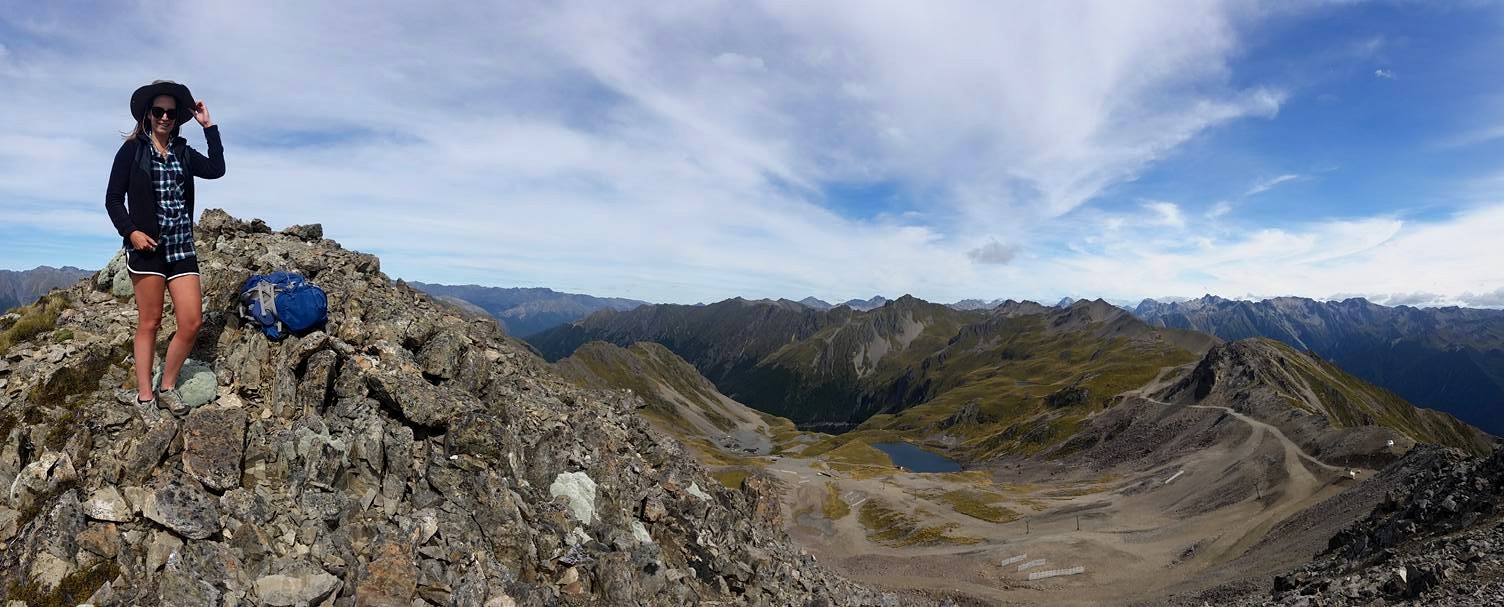 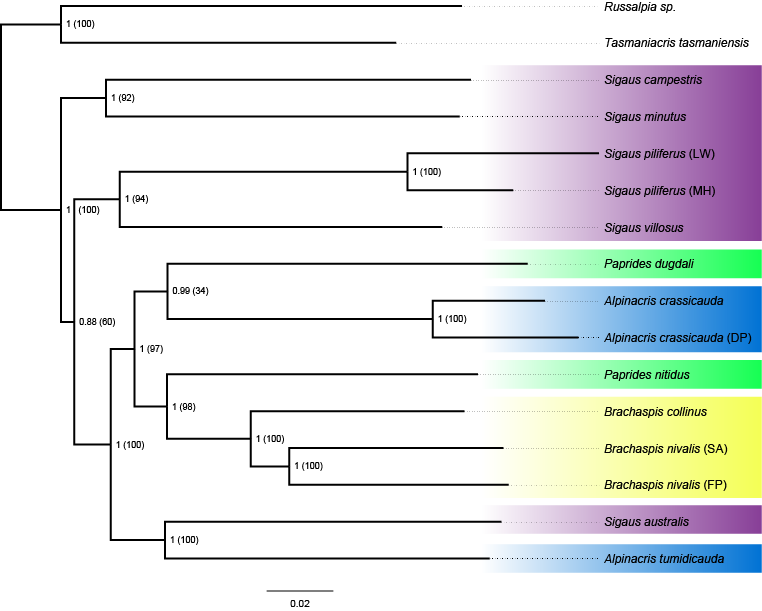
New Zealand has four endemic genera of grasshoppers (Orthoptera: Acrididae), comprising about 16 species. The majority of these species are considered to be alpine specialists – found living at high elevation amongst tussock grasslands, above the tree line. Although members of the Phoenix Group have studied two of these genera previously, no one has yet studied this group as a whole. All but one species are found inhabiting the South Island of New Zealand which is more mountainous that the North Island. All areflightless, lack tympanal organs, display sexual dimorphism (females are larger than males), and have the ability to enter a state of torpor during cold periods – allowing them to survive through winters. While their relatedness to one another is uncertain, their ancestry is also unknown, with suggestions made that they are related to Chilean or Australian taxa.
These grasshoppers are the subjects of my reseach, but the underlying theme is climate change (past, present and future), and how this will impact alpine fauna (in New Zealand and globally). In studying New Zealand’s alpine grasshoppers, I also hope to draw conclusions about how other organisms inhabiting the alpine zone may fair with future climate change.
My first objective is to summarise the responses of alpine species to climate change (past, present and future) on a global scale, keeping in mind evolutionary drivers behind these responses. I then go on to model and compare the predicted impacts of future climate change on island alpine zones, comparing loss and fragmentation of New Zealand’s alpine zone with that of nine other island systems. The number of alpine plant species New Zealand could lose with future climate change has already been quantified, but there is a gap in our knowledge of how faunal species may be impacted - I aim to establish this.
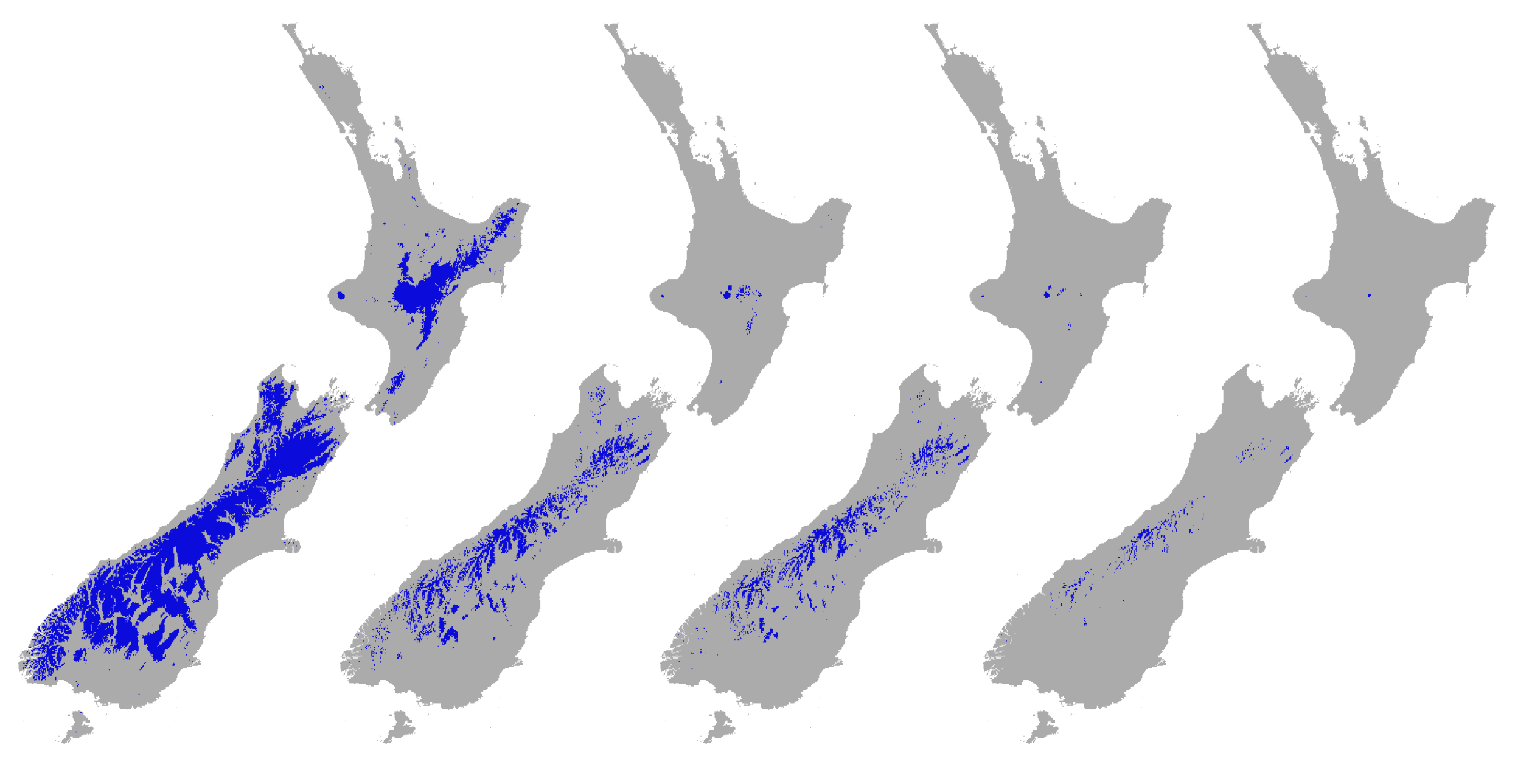
The remainder of my thesis then focuses on the grasshoppers. One part is dedicated to determining if the New Zealand genera are a monophyleticgroup and who their closest relatives are, how the New Zealand taxa are related to each other and when they arrived and divergsified in New Zealand. This work uses fossil calibrated phylogenetic analyses of whole mitochondrial genomes and nuclear DNA. I am establishing species distributions (especially in light of newly established phylogenetic relationships) and modelling their ecological niche space (for past, present and future climate scenarios) using abiotic and biotic data. Finally, a more fine scale analysis of species distributions, interactions and responses to climate change uses a field study investigating how sympatric species on three mountain ranges partition their niches across an altitudinal gradient, and how their populations are genetically structured.
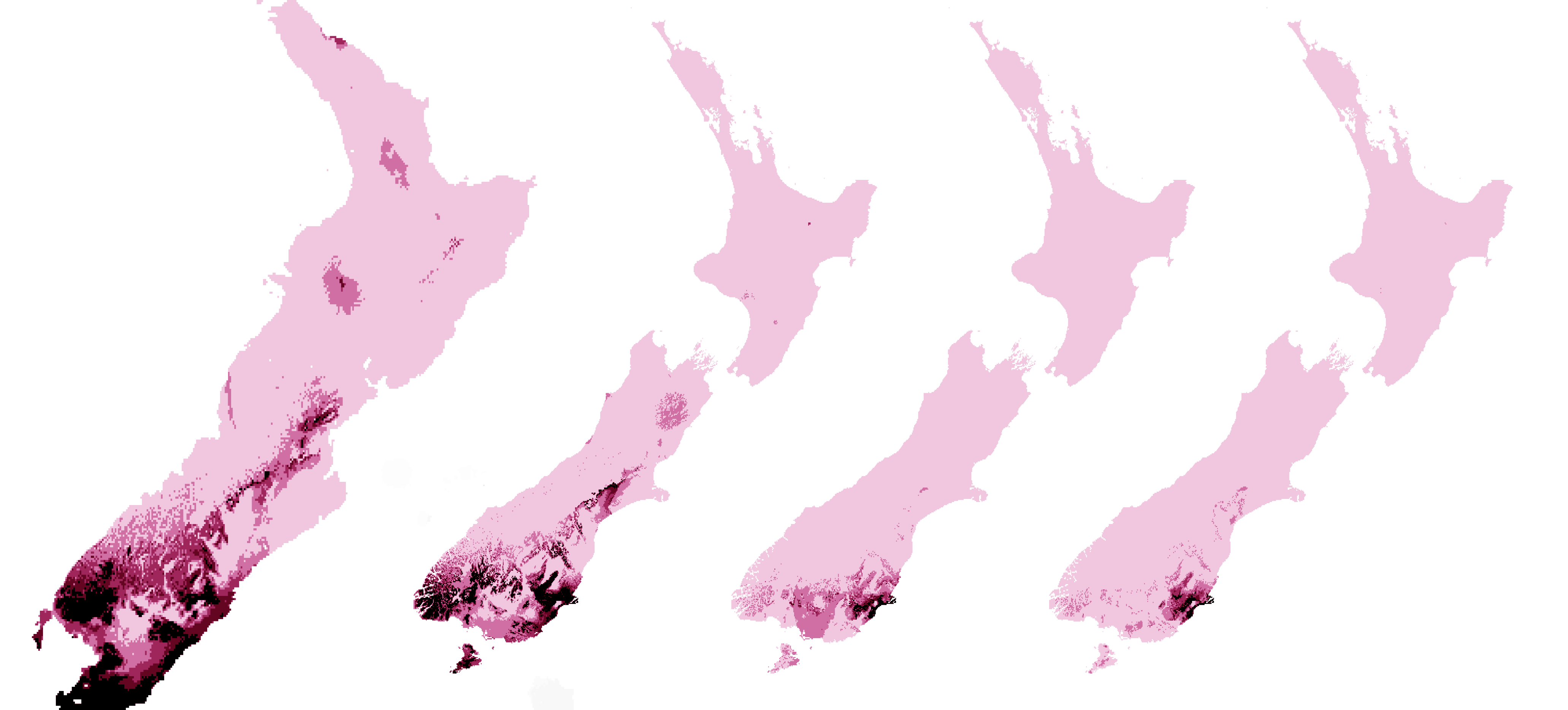
|
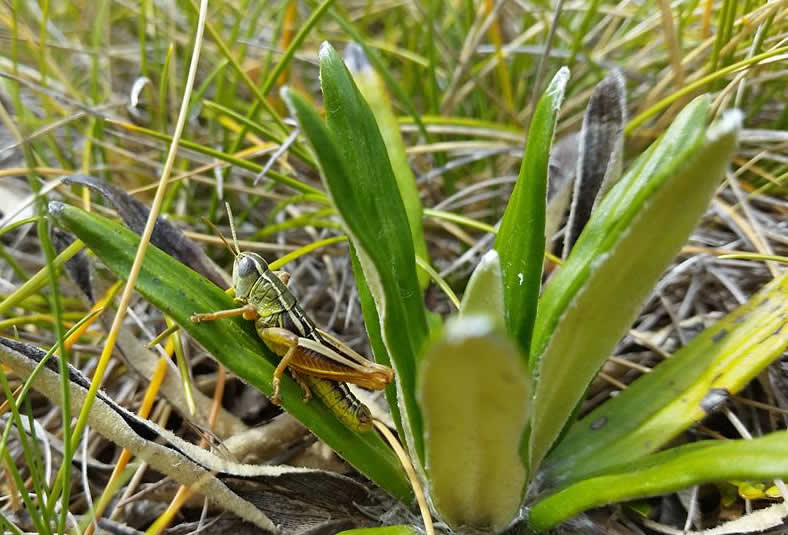 |
Publications
Sivyer L, Morgan-Richards M, Koot E, Trewick SA. In review. Recent range shifts and gene flow between two grasshopper species revealed by environmental modelling, geometric morphometrics and population genetics. Insect Conservation and Diversity.
Doddala PRC, Minor MA, Wang Q, Koot EM. 2015. Role of olfaction in host plant selection and local adaptation of a polyphagous herbivore, Eucolaspis Sharp. Journal of Applied Entomology doi: 10.1111/jen.12279
Conference Presentations
Koot EM, Morgan-Richards M & Trewick SA (2017) Climate Change and New Zealand’s Alpine Grasshoppers (Orthoptera: Acrididae). Miss E. L. Hellaby Indigenous Grasslands Trust 15th Triennial Seminar, Dunedin, New Zealand
Koot EM, Morgan-Richards M & Trewick SA (2016) Phylogenomics of New Zealand’s Endemic Acrididae. The 4th Combined Australia and New Zealand Entomological Society Conference, University of Melbourne, Australia
Koot EM, Morgan-Richards M & Trewick SA (2016) Phylogenomics of New Zealand’s Endemic Acrididae. Annual New Zealand Molecular Ecology Conference, University of Auckland, New Zealand
Koot EM & Trewick SA (2013) Diversity and Sympatry in New Zealand velvet worms (Onychophora). New Zealand Entomological Society Conference, Massey University Palmerston North, New Zealand.
Koot EM & McKean T (2013) Diet, Maturity and Male-male combat in New Zealand tree weta. New Zealand Entomological Society Conference, Massey University Palmerston North, New Zealand.
Koot EM & Trewick SA (2013) Diversity and Sympatry in New Zealand velvet worms (Onychophora). Annual New Zealand Molecular Ecology Conference, Victoria University of Wellington, New Zealand.
Qualifications
- 2014 BSc Honours (1st Class) in Zoology, Massey University
- 2012 BSc Double Major in Ecology and Zoology, Massey University
Scholarships & Awards
- 2014 Miss E. L. Hellaby Indigenous Grasslands Trust Research Grant
- 2014 Massey University Vice Chancellor Doctoral Scholarship
- 2012 Massey University Institute of Natural Resources (now IAE) Summer Studentship
- 2012 Massey University Scholarship (top 5% College of Sciences)
|
|